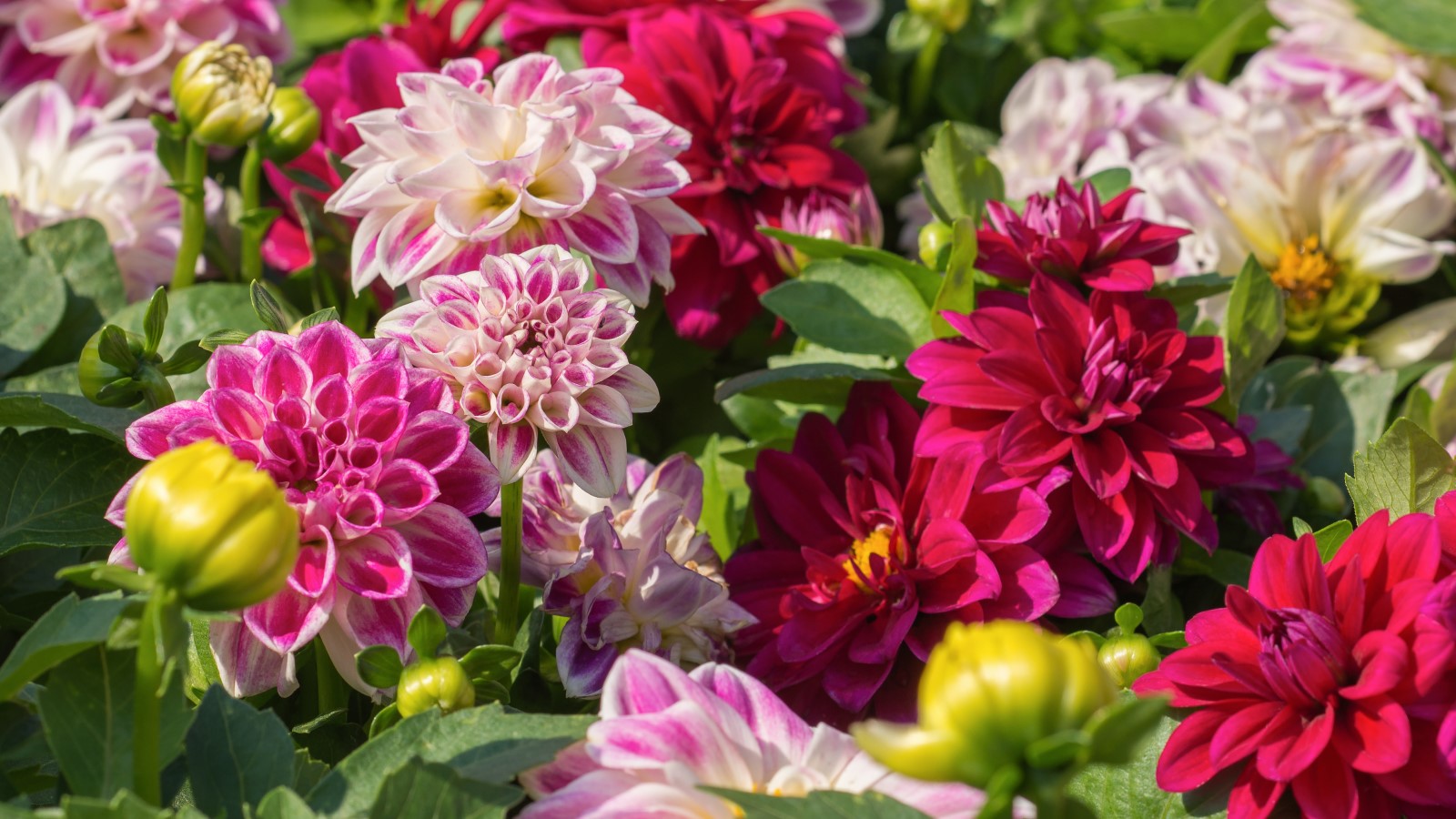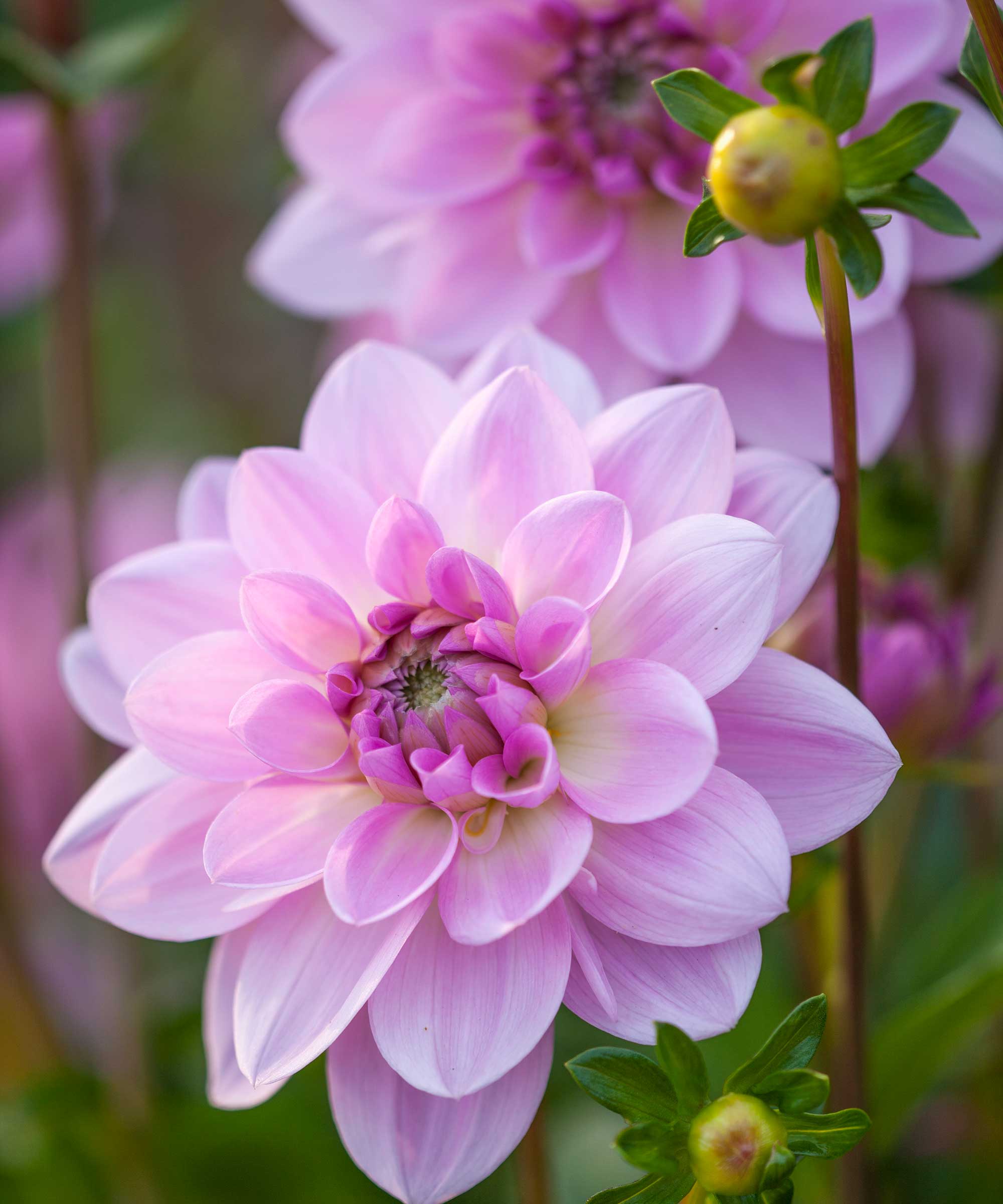Dahlia pests – the best natural solutions as recommended by experts
The prevention and treatment of dahlia pests can mean healthier plants, better blooms, and maybe even more flowers


Dahlias are impactful and glorious plants, with a varied and colorful selection of blooms to choose from. Any display of flowers can unfortunately be sorely impacted by a long list of pests that can ravage a plant.
The likes of aphids, thrips, spider mites, and slugs can all be problems to home dahlia growers. Some of these pests will be too small to see with the naked eye, but the devastation they cause can quickly become evident.
If you are growing dahlias then there are both natural preventative measures you can utilize to deter pests, and actions to take once any infestation has been spotted. A good set of eyes, and taking a quick course of action, can ensure your dahlia display for the summer is not ruined.
What bugs eat dahlias?

Dahlias bloom from early summer right through into fall
There is such a huge variety of dahlias to grow and admire in your flower beds or pick as part of a cut flower garden. However, all types of dahlias can fall foul of pests that want to munch on the leaves, petals, or flower buds.
Zahid Adnan, experienced gardener and founder of The Plant Bible, claims that regular inspection of your dahlias is ‘paramount’ as pests can ‘quickly wreak havoc’ on your precious plants.
‘If left unchecked, pests can weaken the overall health of the dahlia, potentially leading to stunted growth or even death of the plant,’ he says.
‘By closely monitoring your dahlias, you can identify pest problems early and take timely action to prevent infestations from becoming uncontrollable. Early detection also allows for a more targeted and effective treatment plan.’
Design expertise in your inbox – from inspiring decorating ideas and beautiful celebrity homes to practical gardening advice and shopping round-ups.
We take a look at some of the most common dahlia pests and the damage they can do to your plants:
Thrips - If you get thrips on dahlias they cause damage to leaves and petals, causing puncture wounds on the foliage and turning leaves yellow
Aphids - Aphids are tiny insects that congregate in huge numbers on plants. Aphids on dahlias are commonly seen on the underside of leaves, or sometimes on stems. They cause foliage to distort or curl and can attract mold and other insects to the honeydew that they secrete
Spider mites - It may be difficult to see spider mites on dahlias as they are tiny, you will need a magnifying glass to spot them. Leaves will discolor, turning a yellow tinge and with a red webbing on the backs of affected foliage. Spider mites start from the bottom up, with the oldest leaves getting hit first
Earwigs - The main issue from earwigs on dahlias is that they cause a lot of aesthetic damage, shredding blooms and chomping on leaves. Edges will be nibbled and holes pincered through petals and foliage.
Slugs and snails - The distinctive slimy trails along with nibbled leaves and stems are classic signs of snails or slugs eating dahlias. These voracious and common garden pests can do huge damage to young and fresh growth not long after you have planted dahlias in the yard
Capsid bugs - Dahlias are particularly susceptible to these in late spring and early summer. John Negus, gardening expert, explains how these small pale-green insects suck sap from developing shoot tips and cause real harm. He adds: ‘The saliva of these insects is toxic to plant cells and as the young leaves at the shoot tip grow and expand, the damaged areas become distorted and tear into small holes, which then become ragged.’

Zahid is a renowned figure in the gardening industry, with extensive experience and hard-earned skills in horticulture. As the Founder and Editor of ThePlantBible.com, he provides top-tier content and professional advice to fellow gardening enthusiasts on a daily basis.

John has been a garden journalist for over 50 years and regularly answers readers' questions in Amateur Gardening magazine. He has also written four books and has delivered many talks over the years on horticulture.
Measures to prevent dahlia pests

Aphids suck sap from stems, leaves, and flowers
Planting your dahlias in the best position and in good-quality soil can help to ensure your plants are healthy and strong. Flourishing plants will be more resistant to pests, and also dahlia diseases. Therefore, it makes it important to put your dahlias in a sunny location with fertile soil, ideally enriched with compost or well-rotted manure, that drains well. If you are growing dahlias in pots then location and the soil will also be key areas to get right, as well as making sure any planter has holes in the bottom for drainage.
As well as location, proper maintenance plays a part in combating potential pest problems. Correct watering, careful and proper feeding, and removing any debris from around the dahlias will ensure plants are not stressed, and provide nowhere for the pests to hide. When you are pruning dahlias or deadheading dahlias then keep a close eye for any damaged sections too, and remove them from the plant.
Companion planting can be utilized to repel pests that might otherwise look to attack your dahlias. There are many pest-repellent plants that can be used to discourage certain pests, with the likes of marigolds, chrysanthemums, lavender and calendula great options to deter many insects.
You can buy lavender seeds and plants from Burpee
How do you treat dahlia pests?

The largest pests, including slugs and caterpillars, can be hand picked from the plants, while smaller infestations can be squashed by hand also. Regular inspection is recommended and it may mean heading out in the hours of darkness with a torch, as slugs and snails are night-time feeders.
Another simple way to get rid of aphids, or get rid of spider mites too, is to dislodge them from the plants with a blast of water from a garden hose. There are also organic sprays, or homemade bug sprays, which you can use to control the pests.
John Ehrling from Garden Savvy says targeted chemical insecticides should only be used ‘as a last resort', so recommends a few more natural treatment options which are available.
He says: ‘Insecticidal soap or horticultural oil can be used to treat soft-bodied pests like aphids, spider mites, and thrips, suffocating them while being less harmful to beneficial insects.
‘Neem oil, an organic option, can help control a wide range of pests by disrupting their feeding and growth. Biological control can be introduced by releasing beneficial insects like ladybugs and praying mantises into the garden to keep pest populations in check.’
There is also the possibility of using a natural bacteria in the form of Bacillus thuringiensis to combat caterpillars and their larvae. Any such products are very specific to the insects they are targeting and should be used carefully. One example of such a product is the Caterpillar and Webworm Control, available at Amazon.
A specific trick for getting rid of earwigs is suggested by Tony O’Neill, an experienced gardener and author from Simplify Gardening, who says: ‘Earwigs can be trapped using damp, rolled-up newspaper or straw placed near the base of the plant at night. They will hide in there, allowing you to dispose of them in the morning.’

John Ehrling is the president and co-founder of Garden Savvy, which offers software to gardeners and farmers looking to make their gardening life easier.

Tony O'Neill is an accomplished gardening expert, author, and educator. With a passion for simplifying gardening practices, he has inspired a wide audience through his popular YouTube channel and website Simplify Gardening.
FAQs
How do I keep slugs and snails from eating my dahlias?
There are several slug control methods that can be used to get rid of slugs and stop them causing damage to your dahlias. These include creating a barrier around plants or pots through the use of copper tape, diatomaceous earth, crushed eggshells, or coffee grounds. Other common methods include using slug-repellent plants, beer traps, or attracting predators like hedgehogs, birds, or toads by adding wildlife garden ideas to your space. If you do use diatomaceous earth, aways use food-grade diatomaceous earth, which is available from Amazon
Keeping an eye out for pests, and also diseases, should be seen as an essential part of how to keep dahlias blooming. Not only are they capable of ruining the aesthetics of blooms but are also potentially problematic for buds, causing them to grow in a distorted manner or not open at all. Stopping them from attacking, or dealing with any outbreaks quickly, will ensure plants put on a fantastic display of colorful dahlia blooms for longer.

Drew has worked as a writer since 2008 and was also a professional gardener for many years. As a trained horticulturist, he worked in prestigious historic gardens, including Hanbury Hall and the world-famous Hidcote Manor Garden. He also spent time as a specialist kitchen gardener at Soho Farmhouse and Netherby Hall, where he grew vegetables, fruit, herbs, and cut flowers for restaurants. Drew has written for numerous print and online publications and is an allotment holder and garden blogger. He is shortlisted for the Digital Gardening Writer of the Year at the 2025 Garden Media Guild Awards.